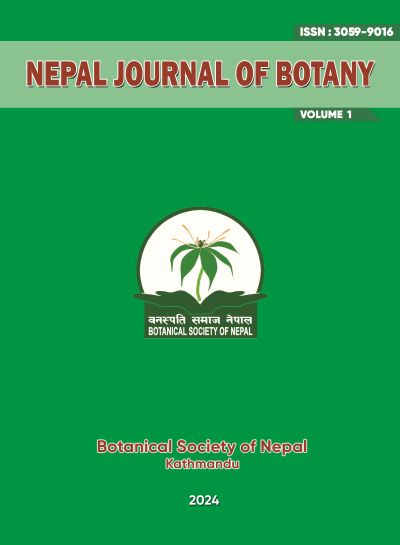Microbial biomass carbon in grassland soil aggregates of Biratnagar, eastern Nepal
DOI:
https://doi.org/10.3126/njob.v1i1.66513Keywords:
Macroaggregate, Microaggregate, Soil organic carbon, Total nitrogenAbstract
Soil aggregation analysis was done in the grassland community of Degree Campus of Biratnagar, eastern Nepal. Physico-chemical and microbial biomass carbon were assessed in microaggregate and macroaggregate soil components. Estimation of soil organic carbon (SOC) was done by dichromate digestion method, total nitrogen (TN) by micro-Kjeldahl method and soil microbial biomass carbon (MB-C) by chloroform fumigation-extraction method. Macroaggregate component was dominant over microaggregate exhibiting 65:35 ratio in the soil. Soil organic carbon was higher in microaggregate than macroaggregate but C:N ratio was narrow (8.2-9.2) in macroaggregate indicating the concentration of nitrogen was relatively higher in macroaggregate. Conversely, the microbial biomass carbon was higher in macroaggregate than microaggregate which is also reflected in higher percentage of MB-C in soil organic carbon. Dominance of macroaggregate in soil with high value of MB-C as percent of SOC (2.50-3.82%) represent a more suitable component of soil in comparison to microaggregate. Because of high value of active and functional fraction of SOC, the macroaggregate component of soil may contribute a greater role in the development of grassland community.




